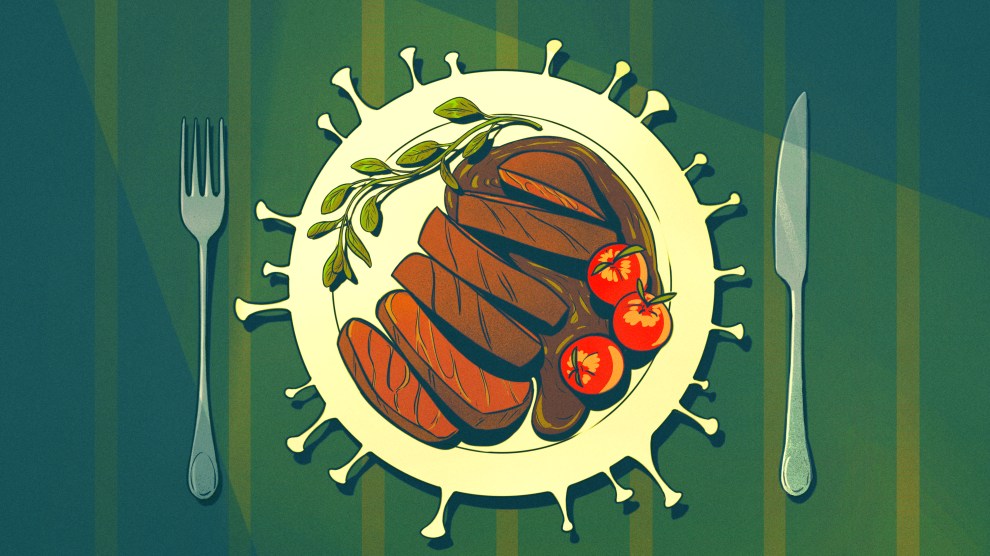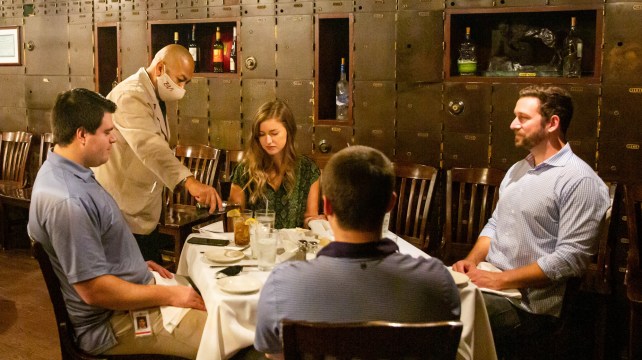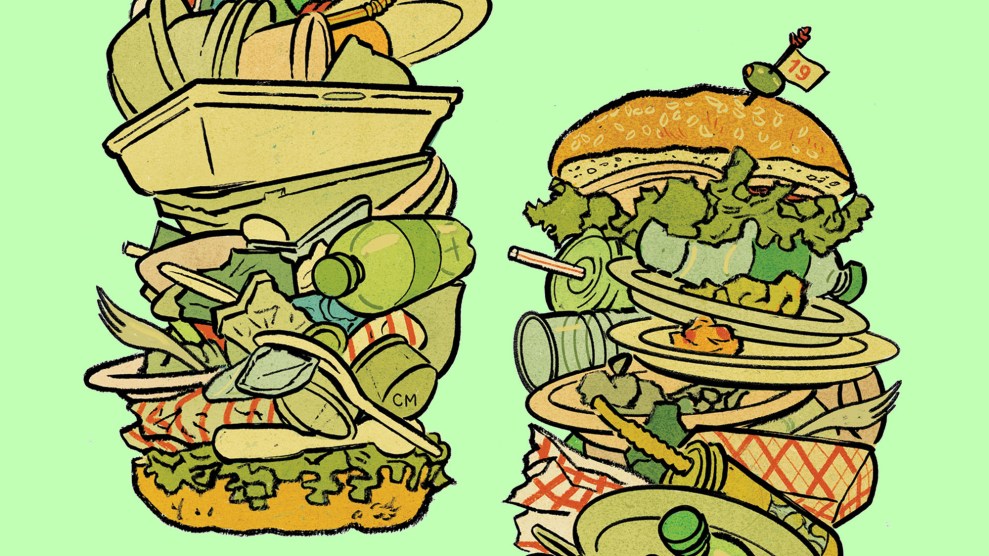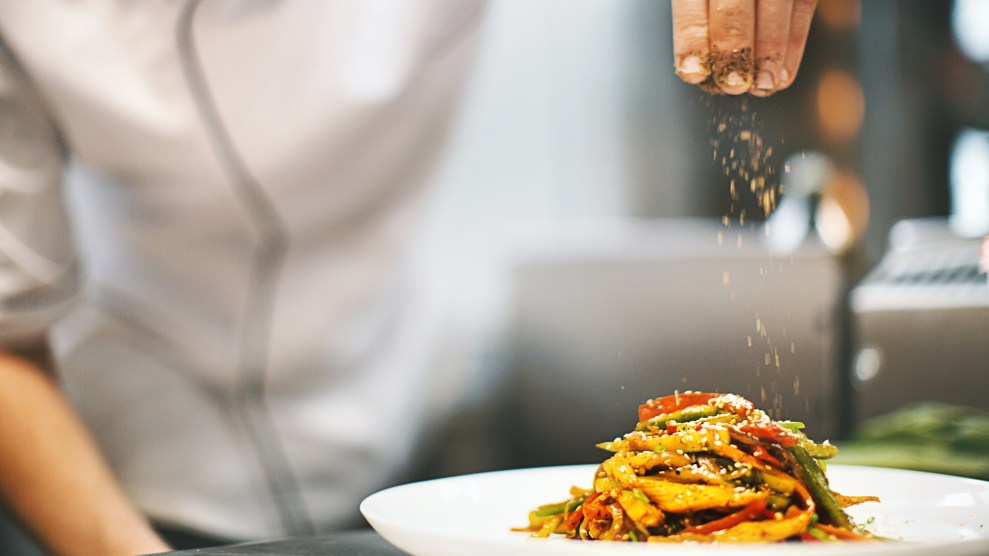
Kotyński
As the winter’s deadly coronavirus surge descended, a study published in the science journal Nature offered some disappointing news for restaurant owners already buckling under pandemic restrictions. “Restaurants were by far the riskiest places” for the transmission of COVID-19, Jure Leskovec, a Stanford computer scientist and senior author on the study, told reporters last month. The study, a collaboration between Stanford, Northwestern University, Microsoft Research and Chan Zuckerberg Biohub, analyzed the cell phone data from 98 million people across 10 US cities from March to May to estimate how much certain venues contributed to outbreaks. The findings deemed indoor dining to be about four times riskier than gyms and coffee shops.
In the weeks that followed, governors across the nation forced restaurants to shutter as cases spiraled out of control. Governor Cuomo shut down indoor dining in New York City indefinitely on December 14, just as the state’s hospitalization rate rose over 5,000 per day for the first time since May. Other states and cities have imposed temporary in-person dining shutdowns in an effort to stymie the virus’ spread.
The Stanford study doesn’t prove that every open restaurant in the country is responsible for outbreaks in their surrounding communities. But it does help explain field studies and related research that have identified the core behaviors of eating outside the home as risk factors for virus transmission, according to Marc Lipsitch, an epidemiologist at Harvard University who evaluated the study’s merits for Nature. “There are multiple lines of evidence, each of which alone is not terribly compelling, but together implicate indoor spaces with poor ventilation and masks off,” Lipsitch tells me. “Restaurants are those kinds of places.”
But rather than acknowledge the study’s disheartening conclusion, the National Restaurant Association, the food service industry’s hefty lobbying arm, mounted an attack. The group accused the researchers of establishing “an ill-advised correlation” between the study’s modeling and the risk of dining at restaurants, according to a press release. It also compared the model to the usefulness of “polling data” that “cannot reliably be used to draw definitive conclusions.” In a November 17 letter to the National Governors Association, the trade group’s president Tom Bené declared there is “an unfounded impression that restaurants are part of the problem” and said they’re too often “convenient scapegoat for reflexive shutdowns.” An accompanying statement from the association asserted “there is no scientific evidence linking restaurants to the increase in COVID-19 cases.”
“You can’t, in good faith, say that,” Saskia Popescu, an epidemiologist and public health expert at George Mason University, says of that last assertion. “The nature of what happens in a restaurant means it’s high risk.” When asked for comment about why the National Restaurant Association challenged the Stanford study, a spokesperson for the organization reiterated that it “was a modeling exercise, not a scientific study” and “is not sufficient to justify shutting down businesses.”
But the Stanford study is one of several that have drawn a connection between dining and COVID-19 transmission. Research from the Centers for Disease Control and Prevention published in September found that adults who tested positive for the virus were roughly twice as likely to have reported dining at a restaurant in the two weeks leading up to falling ill as those who did not. A handful of infections transmitted inside a South Korean restaurant led researchers to conclude in November that the virus can travel farther than six feet and can infect others in as little as five minutes. A field study of a restaurant in Guangzhou, China, published in July also determined airflow in such spaces could contribute to disease spread. Together, the findings suggest that efforts to provide adequate spacing between tables “are kind of baloney,” says Megan Ranney, an emergency room doctor and public health researcher at Brown University. And all of these risk factors have intensified in recent weeks because the virus, with an infection rate of nearly a quarter-million cases a day, has so many more carriers.
The National Restaurant Association represents some of the highest-profile food corporations in the world, including McDonald’s and Darden Restaurants, which owns nationwide chains like Olive Garden and LongHorn Steakhouse. Its client list overlaps with members of the corporate-heavy “economic revival industry group” President Donald Trump established to focus on the food and beverage sector. The National Restaurant Association’s then-interim CEO Marvin Irby was also named to the group. Herman Cain, the former Godfather’s Pizza executive and 2012 Republican presidential candidate, served as the association’s CEO from 1996 to 1999. He died of COVID-19 in July.
Even as the scientific community pinpoints eateries as likely virus hotspots, the National Restaurants Association and its state affiliates have continued to attack the scientific merits of restrictions imposed to stop the spread of COVID-19. The Restaurant Law Center, the legal arm of the national trade group, joined the Oregon Restaurant and Lodging Association to sue Gov. Kate Brown (D-Ore.) over the two-week ban on in-person dining she imposed last month, deeming the measures as “unfair, unclear restrictions that have no rational basis in fact.” The Michigan Restaurant and Lodging Association, another one of the association’s state affiliates, sought a temporary restraining order against Michigan’s health department after the state’s forced closure of indoor dining. The association claimed indoor dining can be done “at least as safely as indoor salon services and retail shopping”—two tasks that, unlike eating meals, require patrons to keep their masks on at all times. Judges rejected both requests. A judge also rejected a lawsuit filed in St. Louis by the Missouri Restaurant Association and 40 area restaurants.

People dine out in New York in October.
Michael Nagle/ZUMA
A few of the industry’s lockdown lawsuits have succeeded. The California Restaurant Association won a suit against Los Angeles County’s ban on outdoor dining because the judge, citing the CDC’s guidance, said that outdoor dining “only carries a moderate risk, and less with mitigations.” Another suit brought by an investment company against San Diego’s takeout-only restrictions succeeded last week because the judge ruled the county had failed to prove that restaurants contributed to the recent surge. Indeed, only 9 percent of San Diego County residents who tested positive for the virus reported going to a restaurant in the two weeks prior to their diagnosis, according to the county’s contract tracing records. (California’s current shelter-in-place orders—which ban in-person dining, period—mean dining, whether indoors or outdoors, still has not resumed.)
Some have pushed back against Gov. Andrew Cuomo’s recent decision to shut down indoor dining in New York City on similar grounds. Contract tracing data attributed only 1.4 percent of new cases from September through November to people going to restaurants and bars—a paltry percentage compared to the 74 percent of new cases that arose from at-home social gatherings. But Ranney said the study simply pointed out the limitations of contract tracing: It only covered 20 percent of cases from that timeframe because the other 80 percent of people didn’t know or wouldn’t disclose the source of their infection. “Of course people are going to know if they caught COVID from a household contact,” she explained.
The only science the National Restaurant Association considers sufficient for closing indoor dining is “data clearly linking sustained virus transmission to dining in restaurants,” a spokesperson said. “To date, there is none.” But the experts I spoke to stressed that, given all of the known factors of transmission and the urgent need to halt the spread, these public health decisions can’t wait for the data the lobbying groups demand. “In a world where you need iron-clad evidence in order to enact public health measures, we’d never be able to take any action,” Lipsitch, the Harvard epidemiologist, says.
Experts do sympathize with industry complaints that restrictions have been implemented inconsistently. Angela Marsden, the owner of the Los Angeles Pineapple Hill Saloon & Grill, garnered viral compassion when she uploaded a video of her closed outdoor dining space shown next to a movie set with a nearly identical—and operating—outdoor eating area. The complaint filed in Oregon took umbrage with the fact that health and childcare facilities were allowed to keep their cafeterias open during the ban as long as they encourage physical distancing and staggered use. Ranney blames some of the contradiction on the “mishmash of public health regulations” across states and cities that target industries as a whole rather than on-the-ground realities. But some of the decision making, she says, comes down to our society’s priorities. “Do we prioritize keeping restaurants open, or do we prioritize keeping schools open?” Ranney says.
There’s no ignoring the reality that the restaurant industry has been irreversibly devastated by the pandemic. A September survey from the association found that at least 100,000 restaurants—or, roughly 1 in 6—is either closed permanently or long-term as a result of the pandemic; as of November, nearly two million fewer people work in food and beverage services than at the same time last year, according to the latest numbers from the Bureau of Labor Statistics. The industry has not seen any aid since August, when the Paycheck Protection Program—the initiative Congress passed to give small businesses grants in order to keep employees on payroll—ended. The National Restaurant Association lobbied for a change to the program that allowed chains to qualify for the $523 billion program. Many independent restauranteurs failed to get loans.
The Independent Restaurant Coalition, a grassroots group formed by chefs and independent restaurant owners in the wake of the pandemic, is advocating for a bill that would give $120 billion in relief to bail out independent restaurants and bars. A report the group commissioned in June determined 85 percent of all independent restaurants could shutter for good if Congress doesn’t deliver targeted aid by the end of the year. (The National Restaurant Association has only endorsed the Senate version of the bill, which would also make the big chains eligible for the grant money.) Neither version made it into the last-minute coronavirus relief package congressional leaders agreed to on Sunday, but the legislation includes another round of small business lending with improvements to include the independent restaurants largely excluded from the first round.
Even though the economic stakes couldn’t be higher, challenging state and local restrictions by undermining science is a move that puts profits over public health—and is ultimately fighting the wrong battle, epidemiologists say. “Really, this should not be about trying to say restaurants are safe,” Popescu says, “but that they need economic support because of the inherent nature of their business.”
Public health restrictions aren’t the only regulations the National Restaurant Association has challenged during the pandemic. Its legal arm also filed an amicus brief in a case seeking to overturn a 2019 Seattle law that would provide workplace protections and additional wages for health care costs. The group has long resisted state and federal attempts to raise the minimum wage and end the subminimum wage that tipped workers, such as restaurant servers, receive.
And it’s the industry’s workers who have the most to lose. Popescu notes that while much of the focus has been on keeping restaurant patrons safe, restaurant workers—many of whom earn subminimum hourly wages and don’t have health insurance—spend their days close to mask-less diners and in the tight quarters of restaurant kitchens. Indeed, food and hospitality workers have made up an alarming number of coronavirus cases throughout the pandemic, and some hospitality workers and the unions that represent them have called for lockdowns and aid to workers so they can stay at home.
The National Restaurants Association maintains that “safety of the industry’s staff and customers is everyone’s number one concern” and it has worked with other organizations to put out guidelines of pandemic-specific safety and hygiene practices. Its involvement in challenging local regulations is “to make sure that decisions by government officials, particularly those that impact the livelihood of our workers, are based on science,” a spokesperson said.
But a critic of the trade group sees things a little differently. “We must save both restaurants and the restaurant workforce,” says Saru Jayaraman, the president of One Fair Wage, a service sector advocacy organization. “Workers “will not be able to come back to work or consume in a way that supports the economy if they are destitute, sick, or have passed from COVID.”












